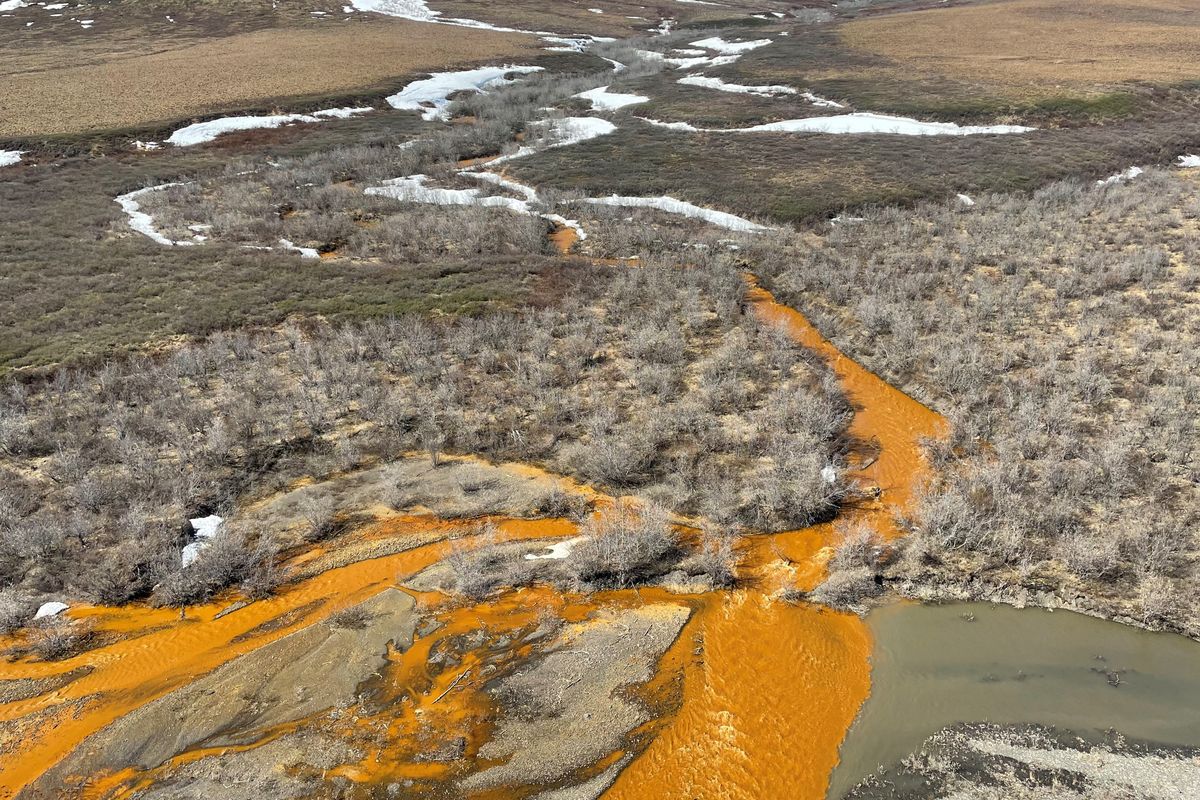Alaskan rivers are turning orange. Climate change could be to blame.

Climate change is probably causing dozens of rivers in Alaska to flow orange, and it could have disastrous, cascading consequences on the state’s ecology and rural communities, researchers said in a study last week.
“More than 75 streams and rivers have changed in their chemistry, and it has implications for aquatic health and rural communities,” said Brett Poulin, one of the study’s researchers and an assistant professor of environmental toxicology at the University of California at Davis. “It’s likely a climate-change-driven phenomenon.”
The study, published this week, was a collaboration between the university, the U.S. Geological Survey and the National Park System. Researchers have since observed more rivers running orange and plan to return to the sites to measure changes to the area’s water quality and ecology, Poulin said. While much remains unknown, researchers said the shifts are alarming and suggest possibly dire consequences for the health of Alaskan rivers and rural communities.
Researchers said the changes could be the result of melting permafrost – propelled by climbing temperatures – which released naturally occurring sulfide minerals into the water. When these minerals, including iron, slip into the water, they react with oxygen and effectively rust, turning clear streams bright orange.
“As thawing is occurring in the soil, those minerals that have been locked away get into the water,” Poulin said. “The deeper the soil thaws, the further the water infiltrates.”
One of the study’s researchers had recorded the changing water colors as early as 2017, when he collected samples at one river, then began hearing that others were also orange.
Researchers across USGS, NPS and UC Davis identified 75 rivers for the study that had turned orange to varying degrees and intensities, collecting 23 upstream- and downstream-water samples. Waterways included the Salmon, Agashashok and Kugururok rivers.
Some ran a murky and cloudy orange; others were bright. All suggested that something was wrong.
“Some of the water coming in is as acidic as lemon juice, with outstandingly high metal content,” Poulin said.
There are two major implications that researchers are concerned about, Poulin said. “The first is ecological: Some of the metals being released can be acutely toxic to organisms.”
The second is what it may mean for rural communities, many of whom regularly fish for survival, he said. “Subsistence fishing is recognized as a major part of their culture and lifestyle,” and compromised rivers would have cascading effects on rural and Indigenous communities’ fishing practices.
Rural communities’ drinking water sources could also be affected. “Many villages have ground water sources, but some do have surface water sources,” Poulin added.
Tim Bristol, the executive director of Salmon State, said the study raises alarms for the state’s fishing industry.
“It’s really disturbing to see this kind of rapid change associated with climate change,” he said. “It’s a call to action for the entire state.”
Fisheries are a bedrock for the state’s economy and culture. Alaska’s seafood industry directly employs nearly 60,000 people, and creates thousands more jobs related to the industry.
“Salmon in particular is so important: it’s food, it’s jobs and income, it’s a foundation of an ancient and continuing culture,” Bristol said.
Some salmon runs in the state are already increasingly scarce, as climate change and other factors weigh against the fish, The Post reported in 2023, resulting in drastic cuts to local food supplies.
Poulin said researchers have not observed fish dying because of the orange rivers. But one of the locations researchers returned to no longer had any fish in it. The small bugs on the bottom of the streambed were also fewer, and the algae density had decreased, he said. “The food web had contracted,” Poulin said.
This should be a rallying cry for the state, Bristol said.
“It’s the kind of thing that can really bring Alaskans together to think more concretely about what we should be doing now, and in the next few years,” he said. “I don’t exactly know what those solutions are right now, but it’s our job to figure it out.”